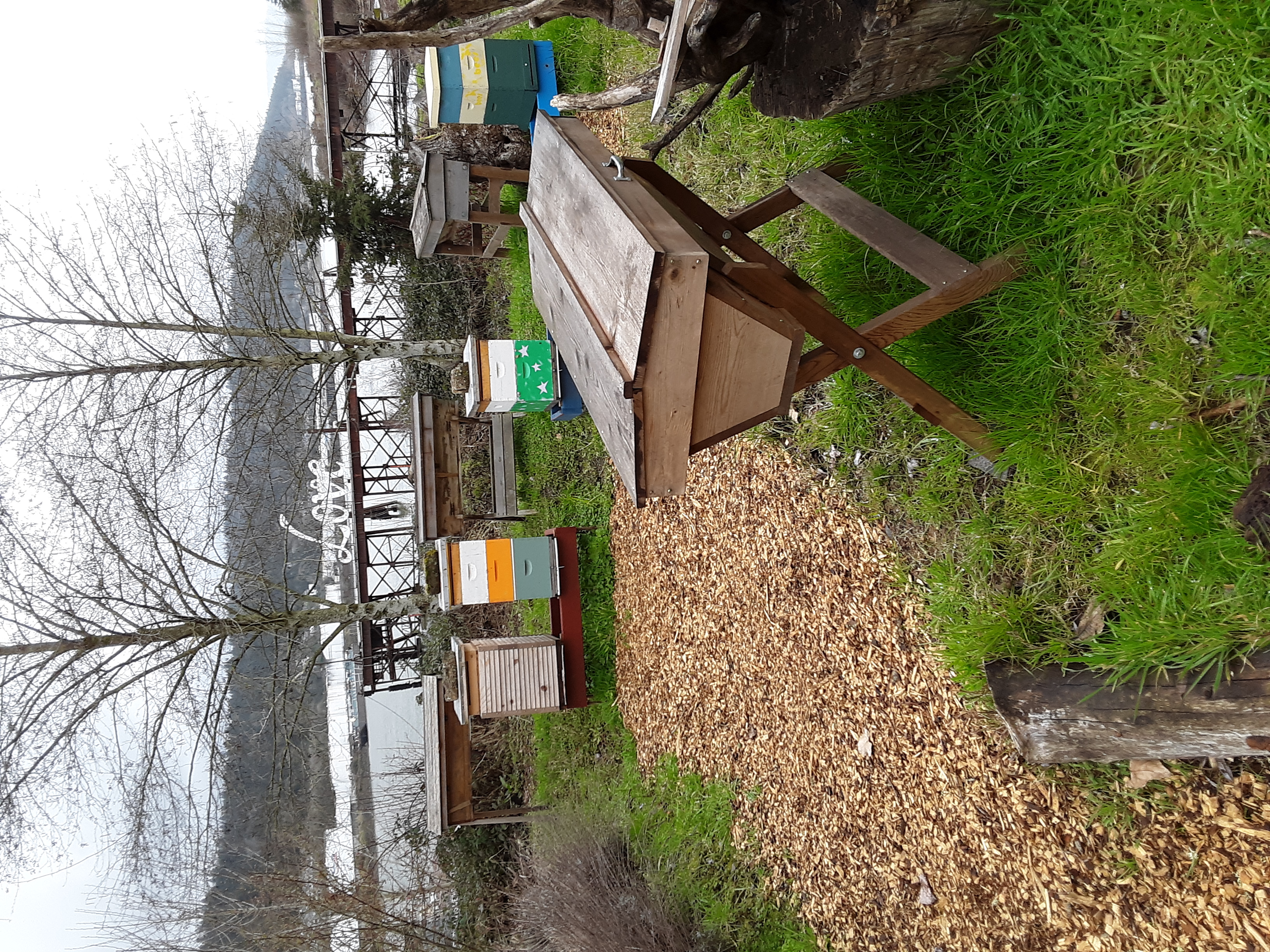Difficult to diagnose. Colonies in same location become very different in population size with advance of season. Colonies at end of rows become strong, more populous. Drones especially prone to drifting.
Drifting is movement of workers (or drones) from parent colony to other colonies, usually a result of bees entering the wrong colony by accident. Drifting is more common between closely sited colonies, such as within the same row of hives, or to colonies within the same apiaryapiary:
a place where beehives and beekeeping equipment are located; also called a bee yard. An out-apiary is a site away from the owner’s residence. , but movement of bees from their parent colony to a colony in a different apiaryapiary:
, but movement of bees from their parent colony to a colony in a different apiaryapiary:
a place where beehives and beekeeping equipment are located; also called a bee yard. An out-apiary is a site away from the owner’s residence. may also occur.
may also occur.
Drifting is common when colonies are all alike: same paint scheme, same orientation, same equipment, or kept close together, etc. Colonies at the end of a row frequently benefit from drifting, accumulating more foragers compared to those within a row. Prevailing winds will mean drifting happens downwind. When colonies are in rows, colonies in the front row will benefit from drift. Drift may be especially obvious if different colonies in the same apiaryapiary:
a place where beehives and beekeeping equipment are located; also called a bee yard. An out-apiary is a site away from the owner’s residence. have different genetics, adult body colors (both workers and drones), or initially are otherwise distinguishable.
have different genetics, adult body colors (both workers and drones), or initially are otherwise distinguishable.
Drifting is common with packages installed at the same time or splits made within the same apiaryapiary:
a place where beehives and beekeeping equipment are located; also called a bee yard. An out-apiary is a site away from the owner’s residence. ; adults may drift back to parent donor colony. It is frequently seen when nucs are made and kept in the same colony. Drifting may be the reason colony mite numbers are rapidly elevated in the fall.
; adults may drift back to parent donor colony. It is frequently seen when nucs are made and kept in the same colony. Drifting may be the reason colony mite numbers are rapidly elevated in the fall.
Drones are more prone to drifting than workers.
The Apiarist. 2015. Drifting in honeybees. The Apiarist. Accessed 2023. https://www.theapiarist.org/drifting-honeybees/
Oliver R. 2018. The Varroa Problem: Part 16a Bee Drift and Mite Dispersal. Scientific Beekeeping. Accessed 2023. https://scientificbeekeeping.com/the-varroa-problem-part-16a/
Wyns D. 2018. Drift. BeeInformed. Accessed 2023. https://beeinformed.org/2018/06/11/drift/
Reyes M, Crauser D, Prado A & Le Conte Y. 2019. Flight activity of honey bee (Apis mellifera) drones. Apidologie 50: 669–680.https://link.springer.com/article/10.1007/s13592-019-00677-w
Koeniger G, Koeniger N, Ellis J & Connor LJ. 2015. Mating Biology of Honey bees. Wicwas Press, Kalamazoo, MI, US. 155 pp.